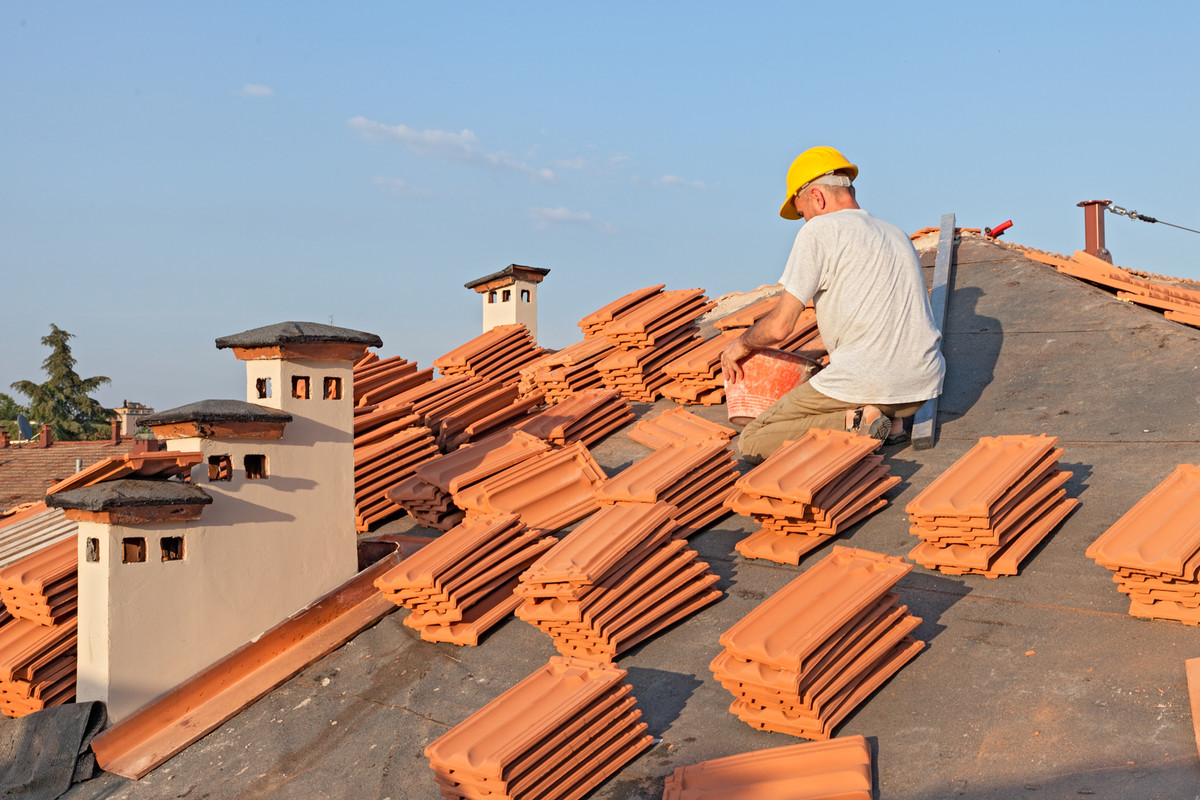Roof Installation – How to Properly Install a New Roof
by siteadmin

If you have a new home and need a roof installation, read on to learn more about the process, the materials used, and the nail placement. If you are unsure of the cost of a roof installation, read on for more information! You will find tips on a range of topics, from what materials to use to nail placement and Felt paper. This article provides helpful advice on choosing a contractor for your project.
Cost Of Roof Installation
The cost of a new roof installation depends on the size of the project, the number of people required, and the economic climate in your area. In general, a square foot of architectural asphalt shingles will cost approximately $100 and accessories can run you an additional $40 to $50. Overhead costs for a general contractor are $251 per day, and labor costs are $17 per square foot. Including a dumpster and permit fees can add another $400 to the final price.
Another factor that can add to the cost of a new roof is the type of roof you choose. Different types of roofs require varying amounts of labor, so you should have an adequate budget to cover all costs. If your roof is steep or has a complex structure, you'll probably need a more expensive budget. The roof materials also play a key role in the building's sustainability. However, you should be aware of these costs and only hire professionals who have the expertise to install such a roof correctly.
Many contractors will try to charge the highest possible price for their services, but this is not always possible. This is due to the competitive nature of the roofing industry. Many roofers don't have workers' compensation insurance, which means that the total cost can be substantially higher than you expected. A general rule of thumb is to hire a roofing contractor who is licensed, insured, and has a solid reputation. As a rule of thumb, the prices listed above are based on a standard 1500-square foot ranch-style roof. Keep in mind, however, that the price may be higher if your roof has a steep slope, more old materials, and extra penetrations.
Materials Used In Roof Installation
There are many different materials used in roof installation and replacement, including asphalt shingles, wood, slate, and composite materials. These materials provide various advantages, including varying costs, aesthetic appeal, and energy efficiency. Some roof installation and replacement methods also include insulating materials below the roofing membrane. These include fiberglass, rigid or semi-rigid boards, and various composite materials. Read on to learn more about the most common materials used in roof installation and replacement.
Another type of roofing material is the thermoplastic membrane. This type of material is made from polymers that soften and harden at different temperatures. Roofing contractors apply these factory-made sheets at the job site, either mechanically or fully adhered. Thermoplastic membranes can also be ballasted. While these installation methods are highly repetitive, they can be beneficial for your home's energy efficiency and aesthetic appeal. These materials can withstand extreme temperatures and remain waterproof and breathable.
Another popular roofing material is the asphalt-based built-up roofing system, which has been popular for over a century. It consists of alternating layers of bitumen and asphalt reinforced with organic and glass-fiber mats. The number of plies on the shingles denotes the number of layers in the roofing material. For roofing felts, the thickness of each layer is generally indicated on the label. However, asphalt-based systems can be costly, and the cost of installation is higher.
Nail Placement
When installing a roof, nail placement can be crucial. Depending on the shingle, you may need to double the number of nails or use fewer nails. Incorrect placement of nails can cause a roof to lose its wind resistance. During the roof installation, use nails that are not too far from the edge of the shingle and are one inch apart or less. Also, nails should not be exposed to the weather or be too close to knotholes or cracks. Make sure to follow local building codes and adhere to the manufacturers' guidelines.
During the roof installation, nailing must be accurate. The International Building Code requires accurate nail placement, but if you are unsure, you can read the blog Atlas. The blog posts on asphalt shingles offer tips on perfect nail placement. You may also be surprised to find out that the nailing tips in their guide are very easy to follow. So, get started today and enjoy your new roof!
Felt Paper
Felt paper for roof installation requires a few basic steps. First, you must line up the top and bottom edges of the roof. Roll out the felt until you have a two-inch overlap. Drive five nails along the top right corner of the first course of felt. Next, roll out the second course of felt to the same overlap, and repeat this process for the entire roof. Make sure that you overlap the first and second layers of felt by at least 2 inches. A guideline is usually stenciled onto the bottom of the roll, so you can follow the guidelines.
Lay out the second roll of roofing felt and staple it to the top edge of the roof line. Fold it over the peak of the roof and staple it to the downward slope of the opposite side of the roof. Once the roof is covered, install the third roll of felt. Place the second roll over the first one. Use the same technique to apply the felt paper to the roof edge of the opposite side of the house. This method will help you ensure that your roof will remain waterproof for a long time.
Felt paper is an important part of the roof installation process. Not only is it a required step, but it is also an important step in protecting your home against water and moisture. Felt paper protects your home from leaks and prevents the growth of mold. When shingles are not used, water and ice can damage the roof and cause it to leak. With felt paper, you won't have to worry about the rain or snow damaging your roof, and it won't rust or crack.
Ventilation
Proper ventilation is essential during the roof installation process. Without proper ventilation, warm air will migrate into the attic space and may then condense on the underside of the roof sheathing. This water will also soak into the roof deck. As a result, the roof will be too warm in the winter, leading to ice dams. Proper ventilation is key to a long-lasting roof. But how do you ensure proper ventilation during the roof installation process? Here are some tips:
Proper intake and exhaust ventilation will increase the life of your roof system. Proper ventilation will also improve your home's energy efficiency. Proper exhaust ventilation will help prevent the destructive effects of condensation on your roof. Proper ventilation also helps to prevent the need for costly ductwork. Make sure to hire professionals to perform the installation. Listed below are some tips to ensure proper ventilation during roof installation. And remember to ask them if you have any questions or need clarifications about roof ventilation.
Proper roof ventilation is crucial for the health of your home and your shingles. Proper ventilation will prevent ice dams in the winter and moisture from building up and damaging your roof. Proper ventilation can also reduce your energy bills, keep you safe from ice dams, and prevent your roof from rotting. In addition to providing proper ventilation for your roof, proper vents will protect you from mold and moisture damage.
Noise From Roof Replacement
Getting a new roof installed is not a pleasant experience, and you should prepare for noise levels to be high. You may experience constant banging, especially if you have a two-story house. The noise may last for the entire day, and you should plan to leave early if you have pets. Luckily, there are ways to minimize the noise level. You can install soundproofing in your home. If you have children or pets, make sure they can handle loud noises.
Roofing contractors also make noise, but it depends on the materials being installed. Plywood and oriented strand board are especially likely to produce noise, so be sure to take your pets outside if you're sensitive to this noise. Also, make sure to replace damaged plywood, as this may result in cracking and popping. If these noises persist, it may be a sign that your roof replacement is causing undue stress.
Random noises are common during roof replacement installations, but they don't have to be a cause for alarm. Sometimes they're merely the result of the natural shifting of the house or weather conditions. If you do hear a loud noise, however, make sure to contact a professional. A roofer can tell you whether you have serious problems or if the noise is just normal. If you think you've experienced noise during your roof replacement installation, make sure to get in touch with a roofing contractor as soon as possible.
CATEGORY: Roofing
TAGS: roof repair, roofing company, roofing contractor, roofing maintenance, roofing services
If you have a new home and need a roof installation, read on to learn more about the process, the materials used, and the nail placement. If you are unsure of the cost of a roof installation, read on for more information! You will find tips on a range of topics, from what materials to…
Recent Posts
- Roofing Company Savannah Sheds Light on the Lifespan of Roofs: How Long Should a Roof Last?
- Choosing the Best Gutters for Your Jacksonville FL Home
- Choosing the Best Gutters for Your Chicago Home
- Exploring the Drawbacks of Duct Cleaning: Insights from Air Vent Cleaning Charlotte
- Sons of Monaco Painting Unveils the Ultimate Solution: Roll vs. Spray for Exterior Paint
